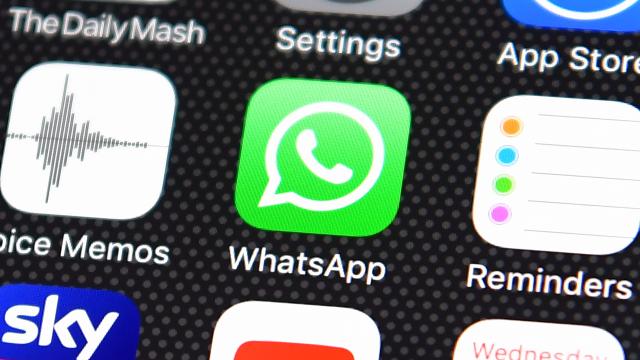Photo: Getty
Police in Wales managed to arrest and convict a drug dealer by identifying his fingerprint from a photo posted on WhatsApp, a technique that the local law enforcement is calling “groundbreaking,” according to the BBC.
The South Wales Police department got its hands on the photo, which depicted the hand of a man holding ecstasy tablets in his palm, after searching the phone of a person arrested in the town of Bridgend. Police identified the fingerprints from the photograph, then matched it to the alleged dealer. In total, 11 convictions were made in association with the case.
Dave Thomas, a member of the South Wales police force, told the BBC the technique is a modern spin on the forensic science of fingerprint analysis. “These guys [drug dealers] are using the technology not to get caught and we need to keep up with advancements.”
The approach is not quite as novel as the police would like to suggest. According to the report, they weren’t able to match the person’s fingerprint in the national databases. Instead, it was the wealth of corroborating evidence, including other information found within the WhatsApp conversation, that helped lead to the arrest.
It’s also a little worrying that the photo of the fingerprint was used at all. Thomas admitted to the BBC that the photo only revealed the middle and bottom of the criminal’s fingerprint (the UK’s national database only stores the top of the fingerprint). He also said the “scale and quality of the photograph proved to be a challenge,” but the police considered it evidence enough to identify the dealer.
Even clear, clean, complete fingerprints are not the perfect indicator that they are often presented as. According to PBS and the National Academies of Sciences, there has never been a peer-reviewed scientific study that proves every person’s fingerprint is unique. Forensic science organisations have urged experts not to use terms like “unique” or “individualized” when describing fingerprints, and the International Association for Identification told its members “not assert 100 per cent infallibility (zero error rate) when addressing the reliability of fingerprint comparisons.”
Additional research has found that contextual bias, including information already known about a case, can influence fingerprint examiners and lead to a false conclusion. A 2011 study asked 169 fingerprint examiners to analyse dozens of fingerprints. It found that three per cent of examiners committed false positive errors, and 85 per cent returned a false negative over the course of the study.
Instead of exercising caution, the South Wales police expressed interest in going the other direction and expediting the legal process with the help of technology.
“We want to be in a position where there is a burglary at 20:30, we can scan evidence and by 20:45 be waiting at the offender’s front door and arrest them arriving home with the swag,” Thomas told the BBC. “That will work through remote transmission, scanning evidence at the scene and sending it back quickly for a match.”
If a partial image of a fingerprint pulled from a low-resolution photo is all it takes to make an arrest, there will be some very full courtrooms in Wales.
[BBC]
